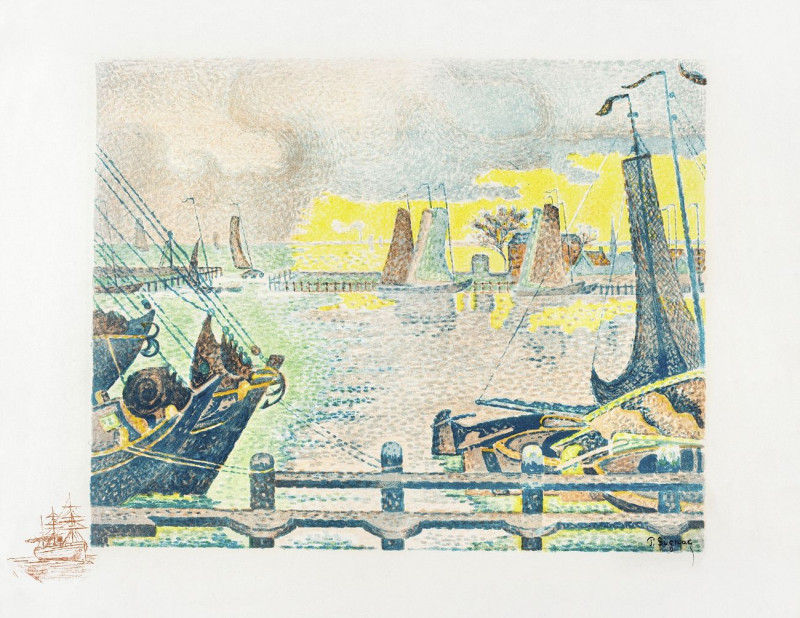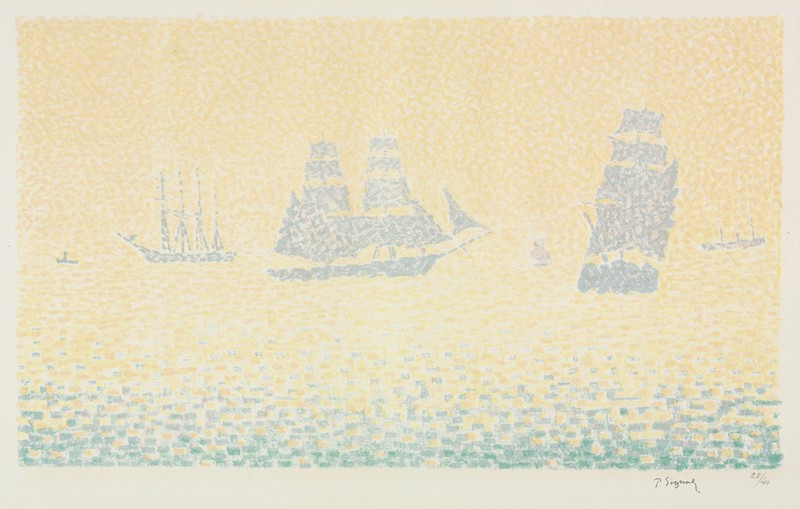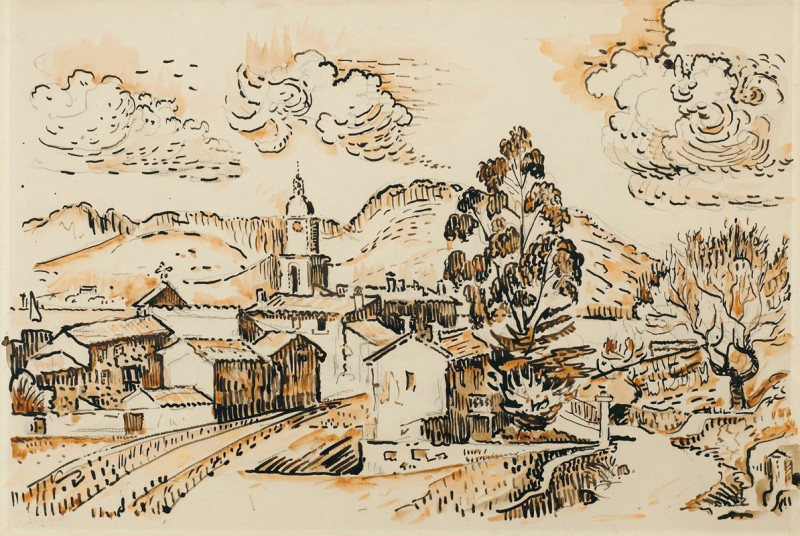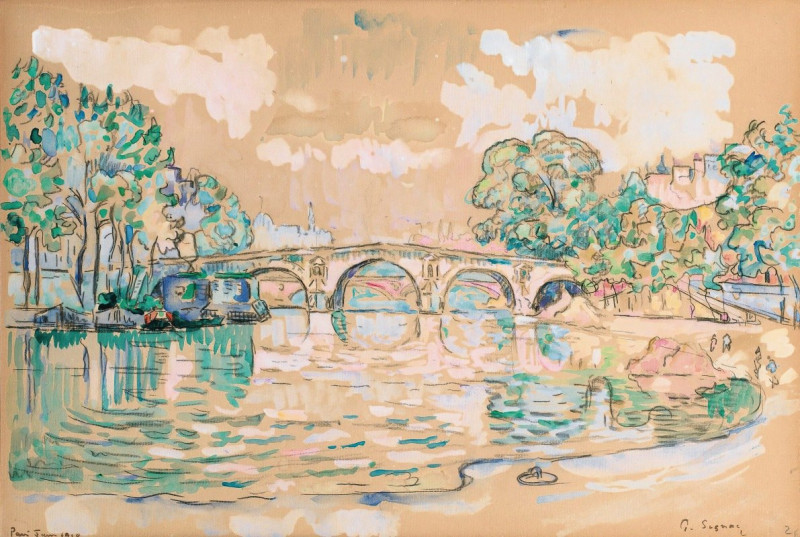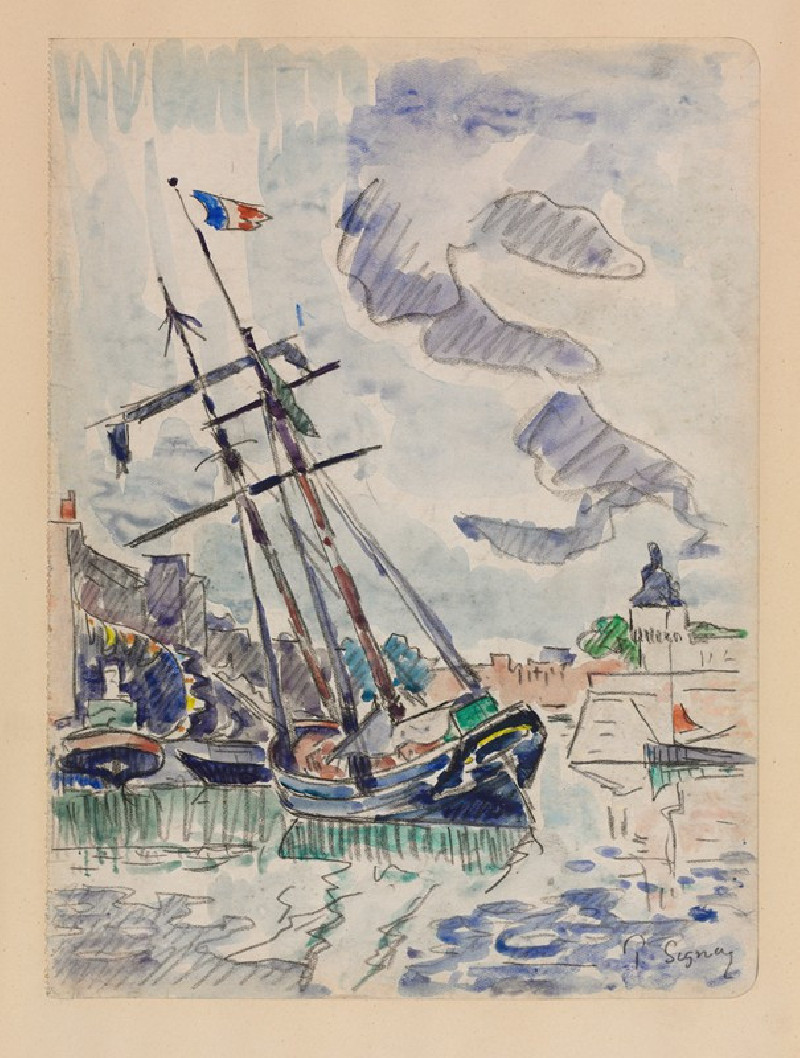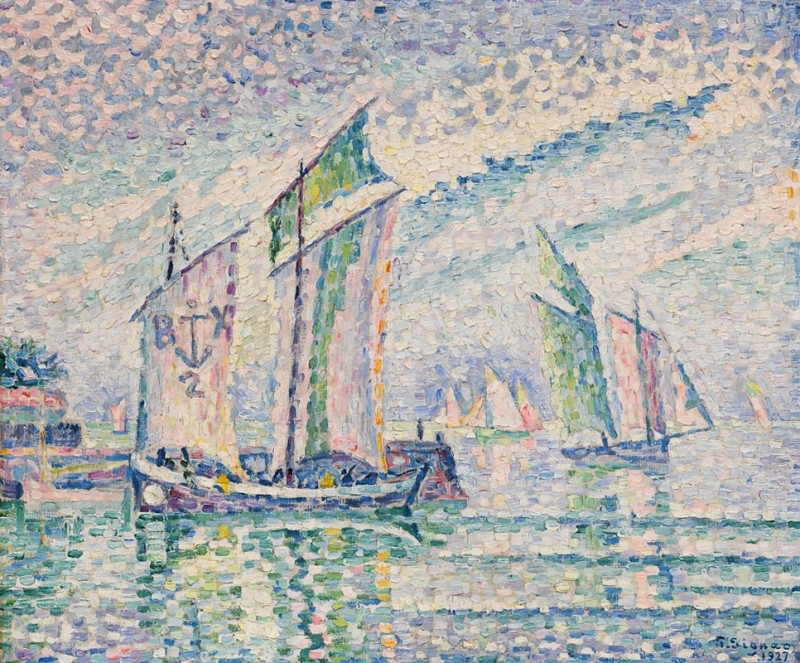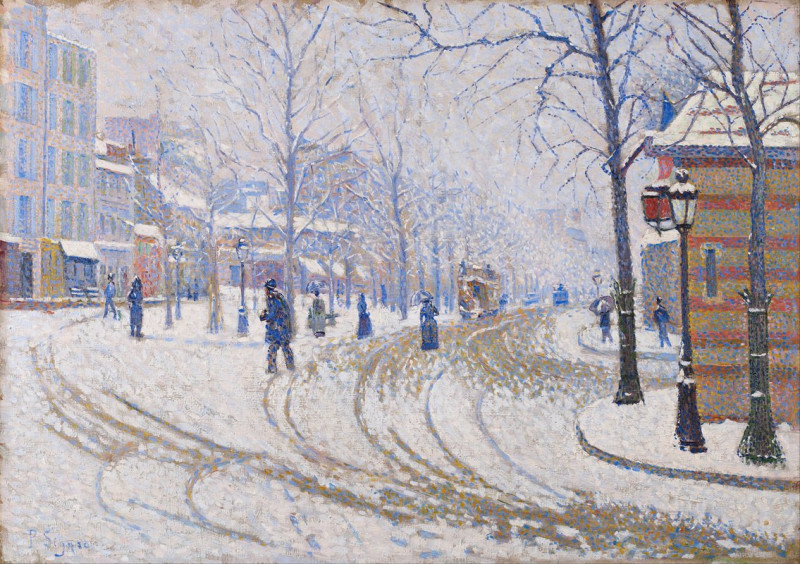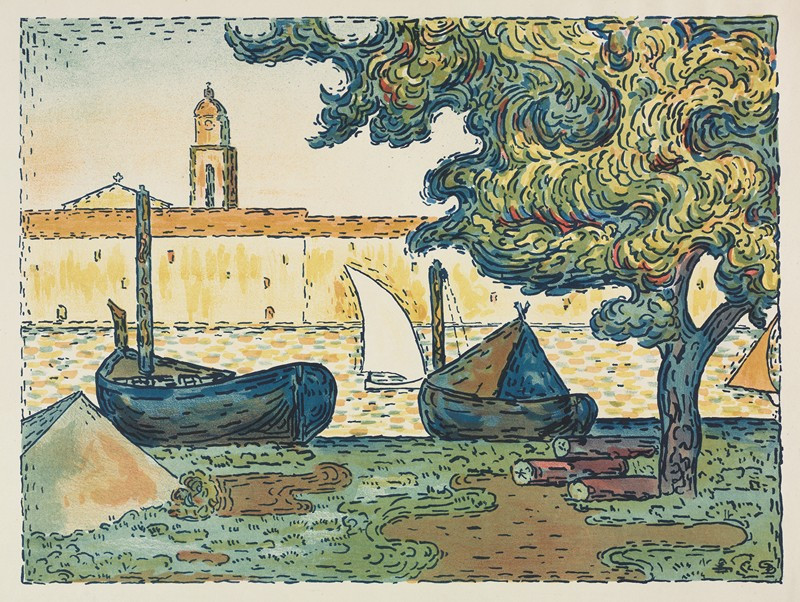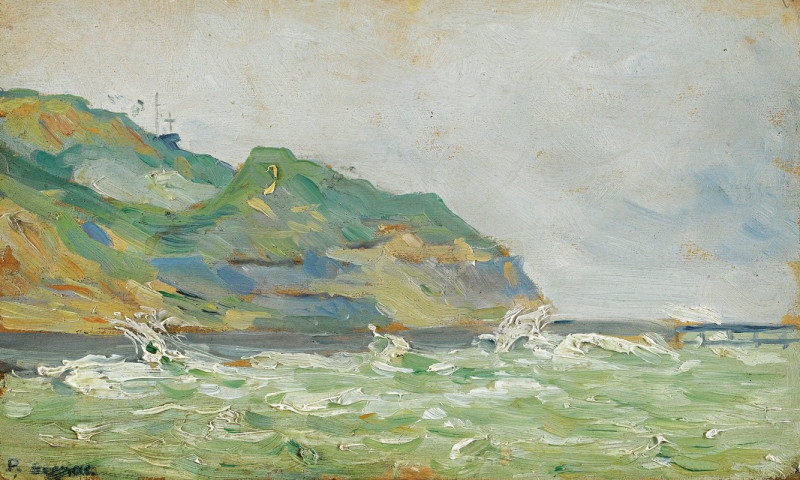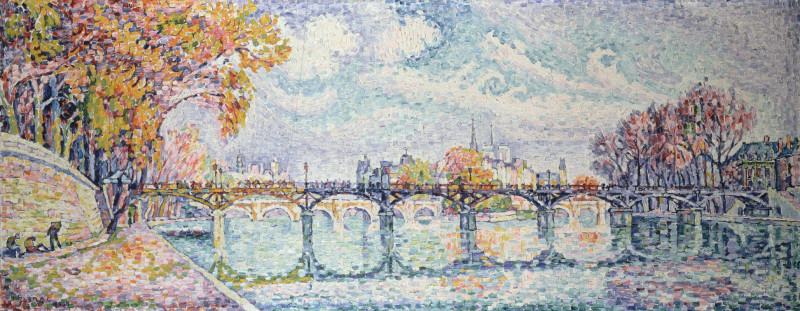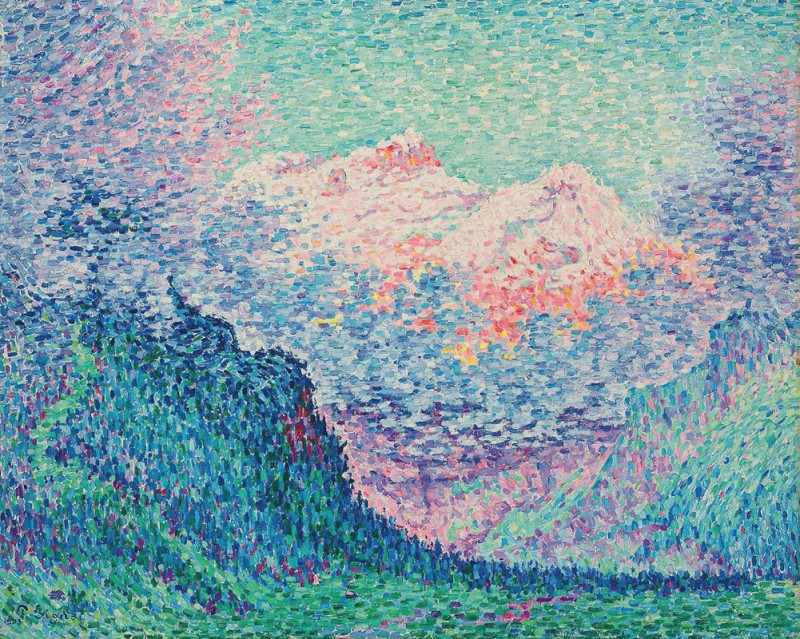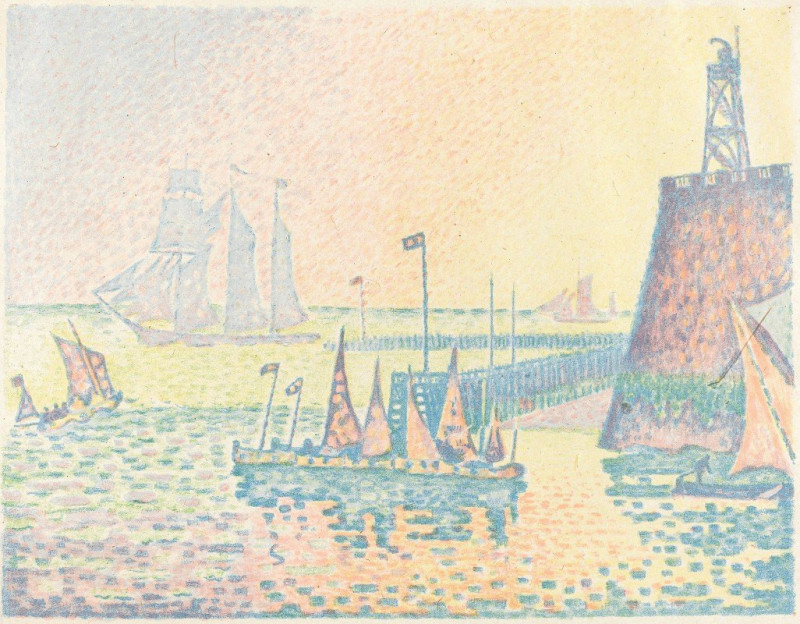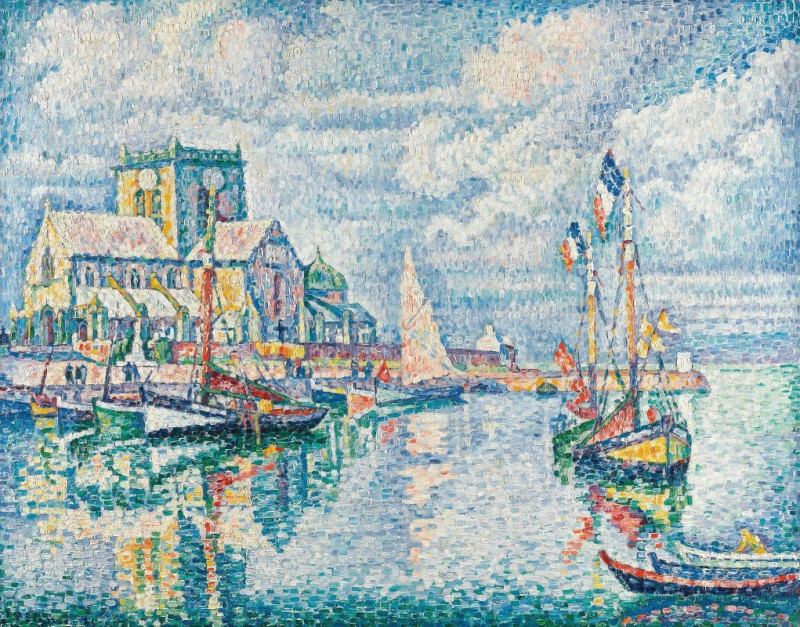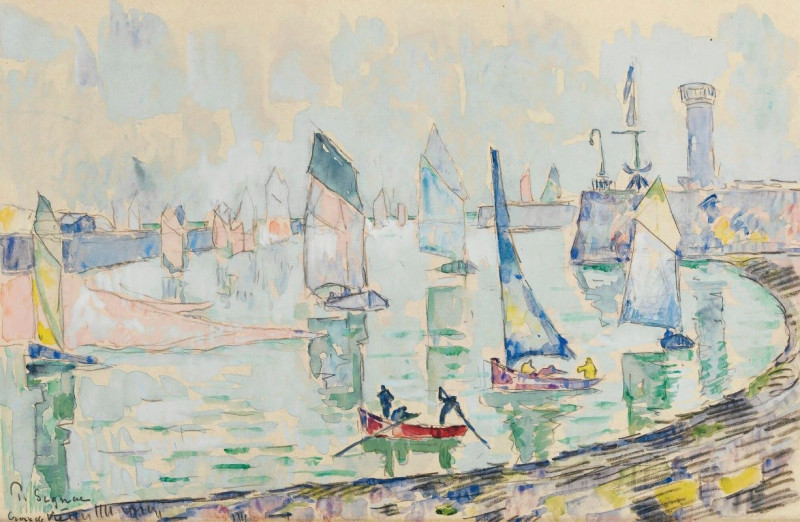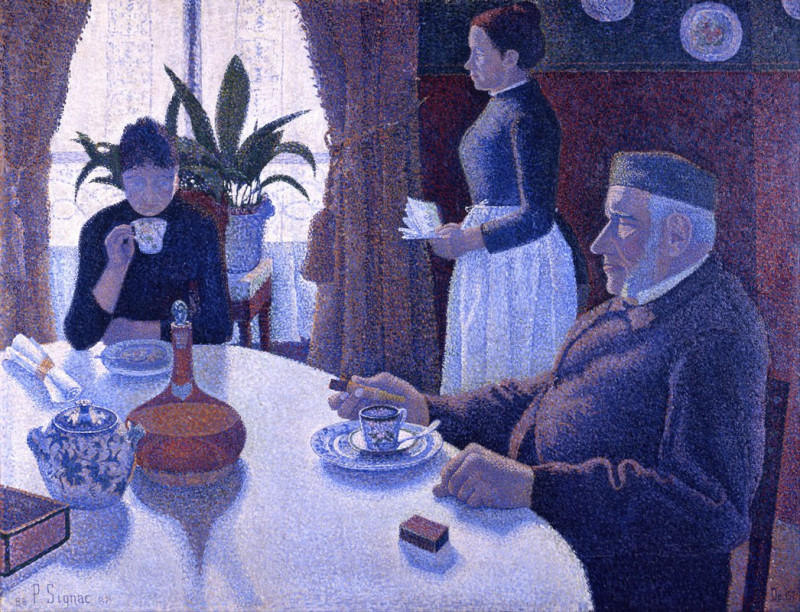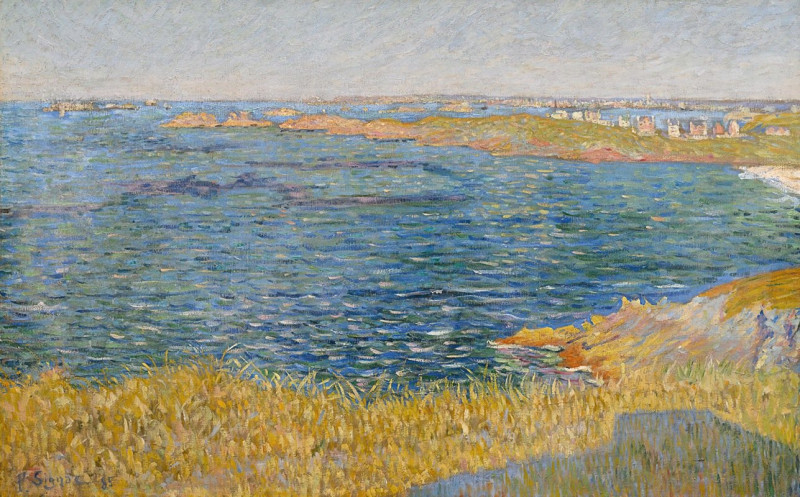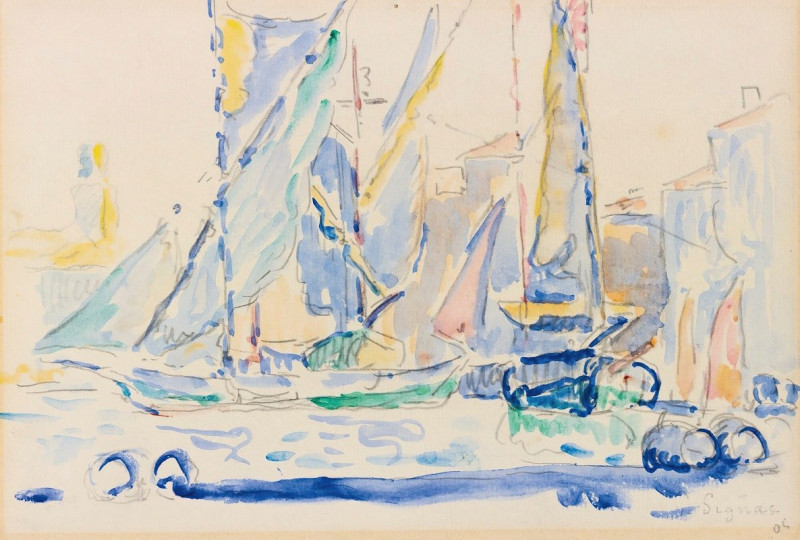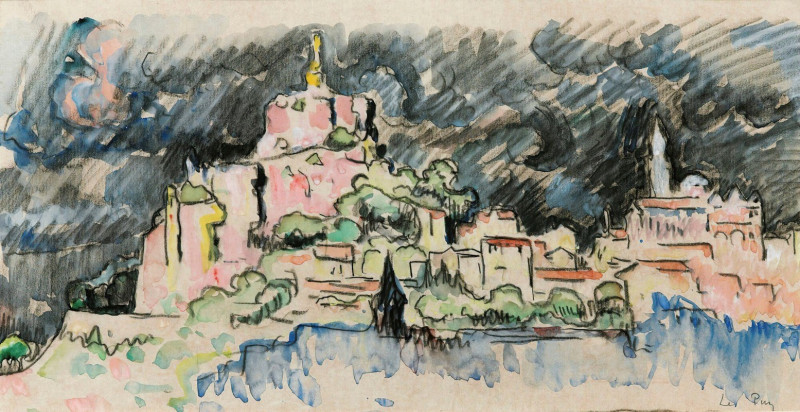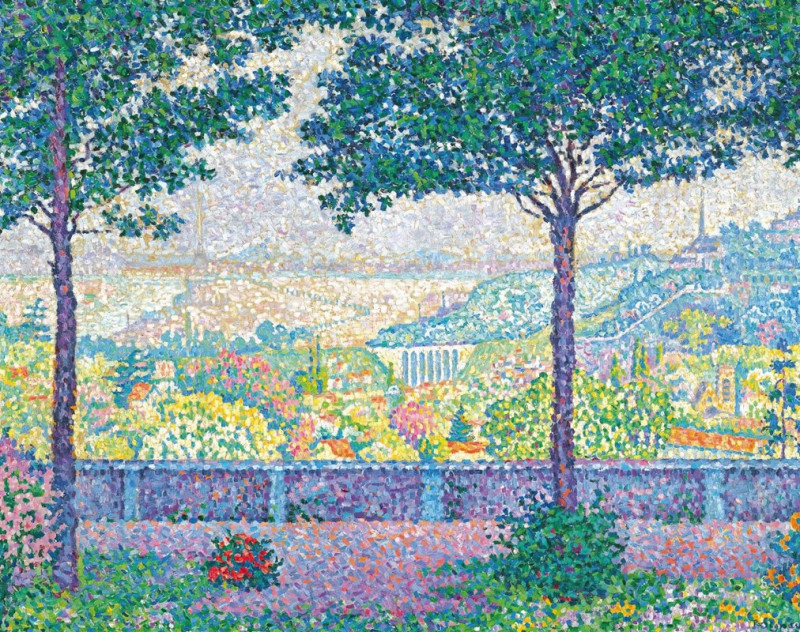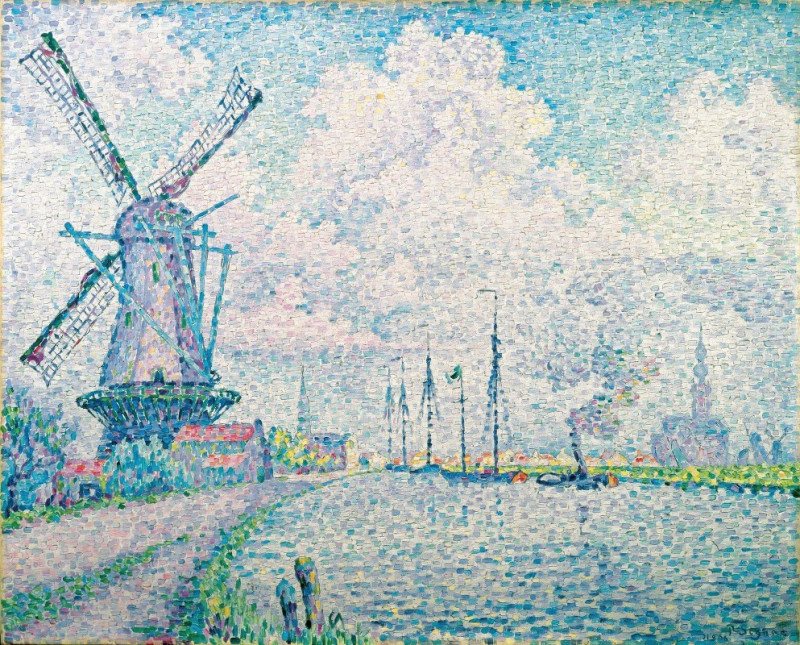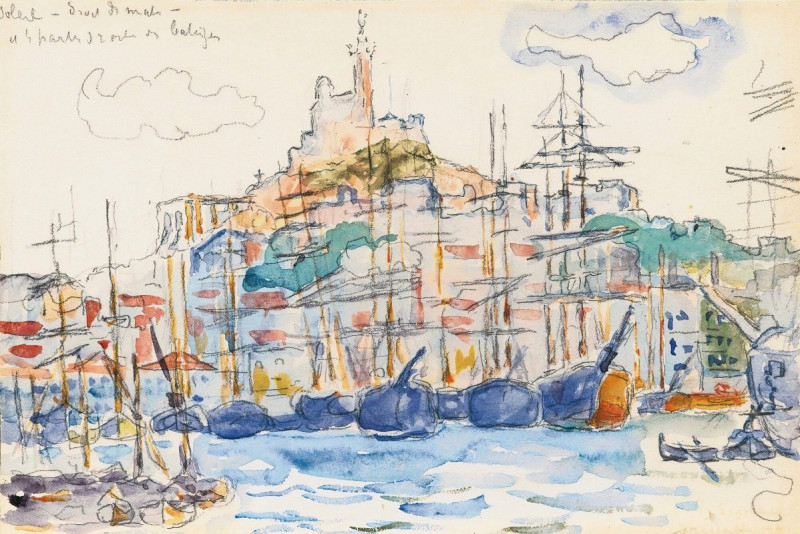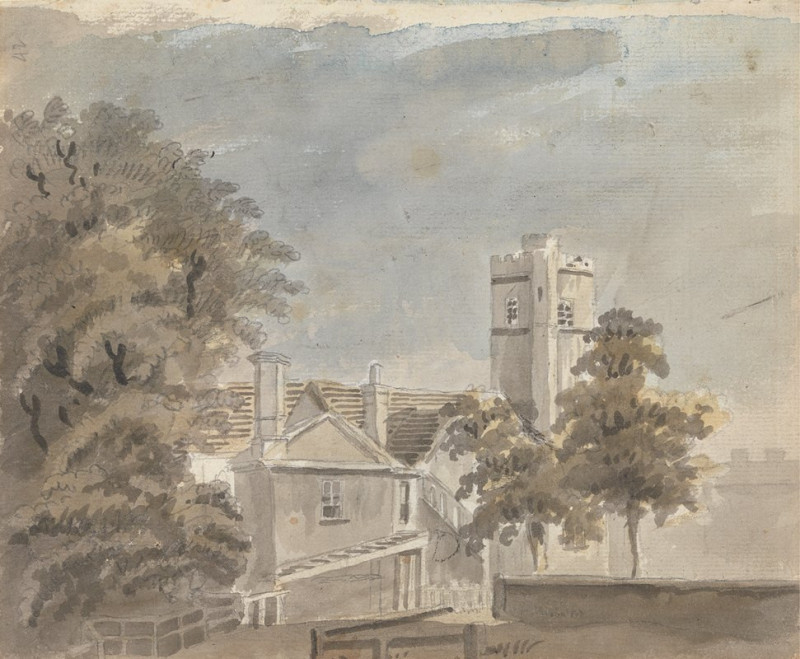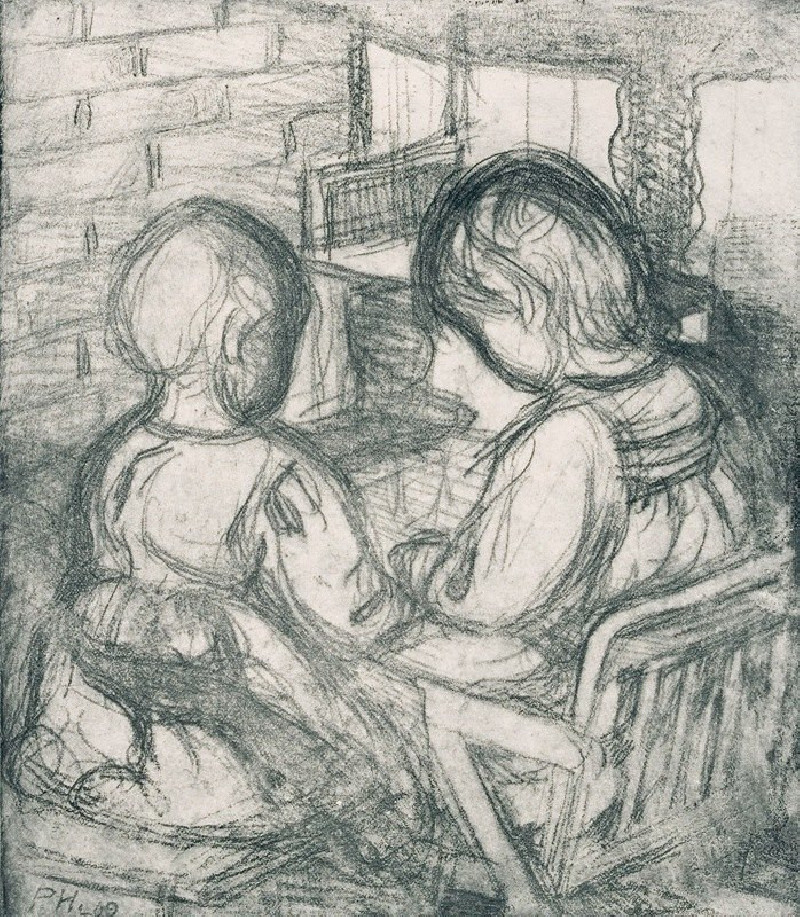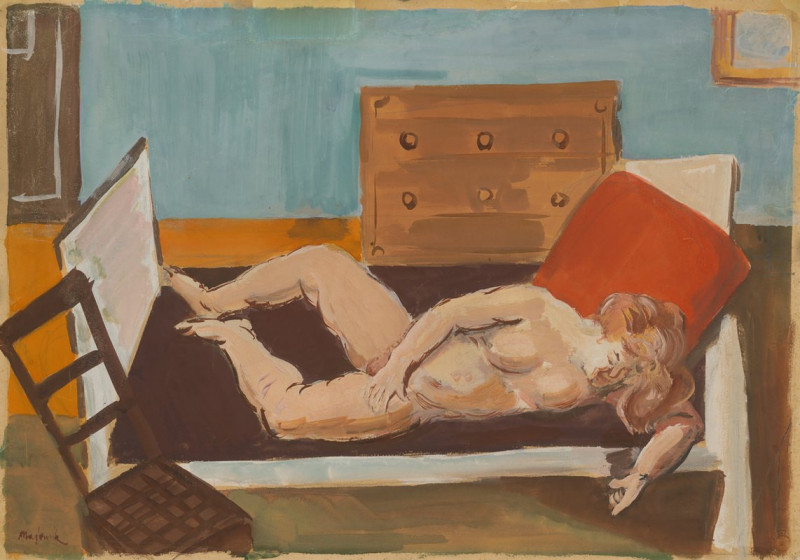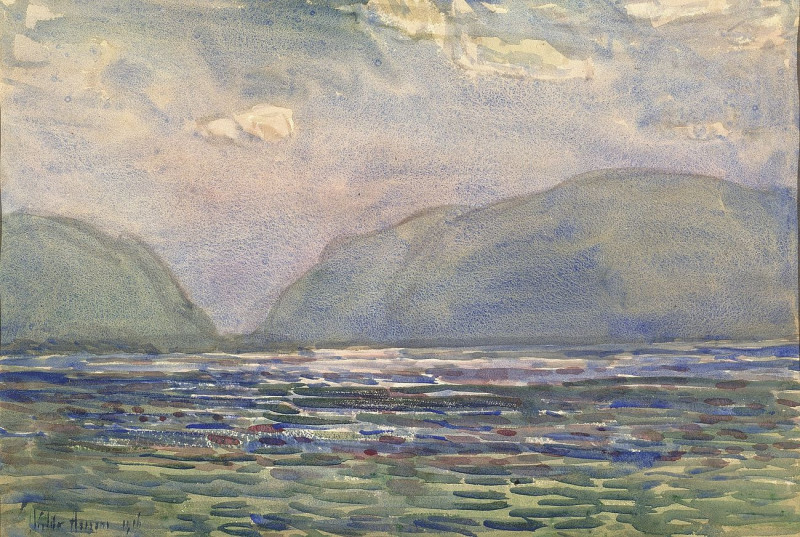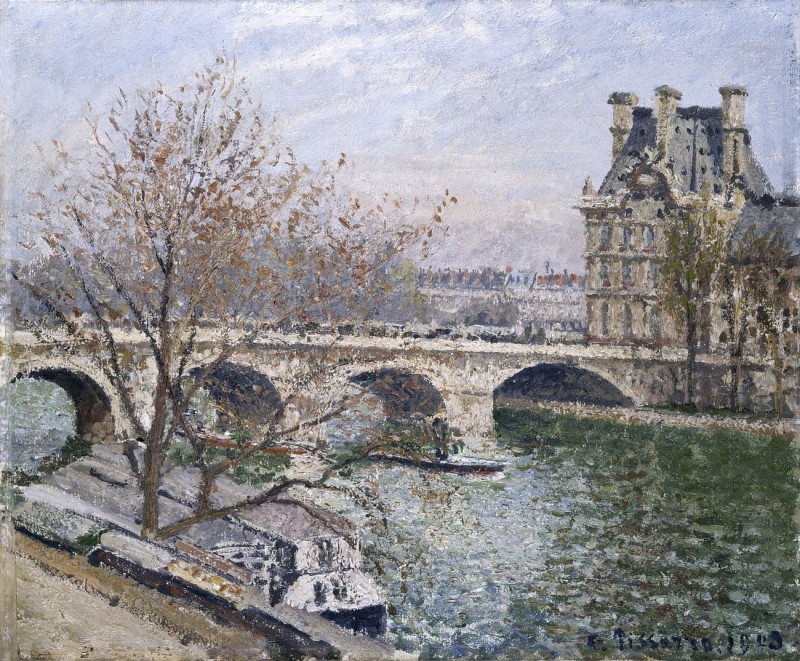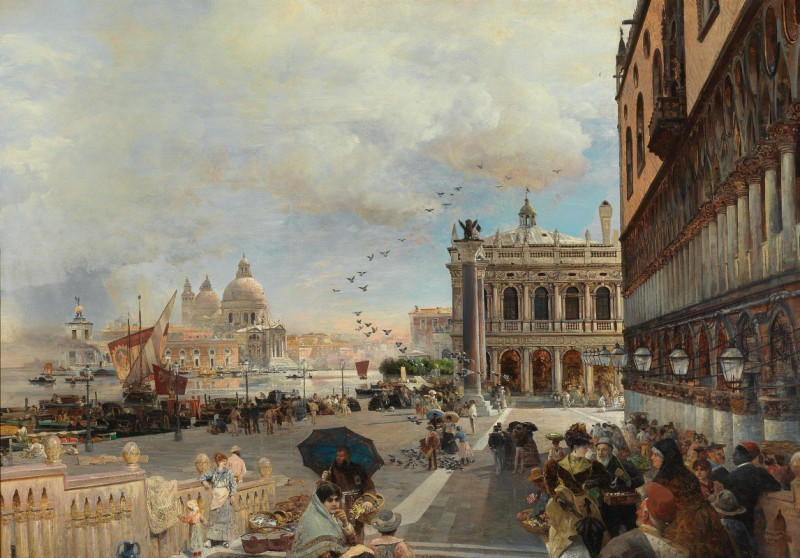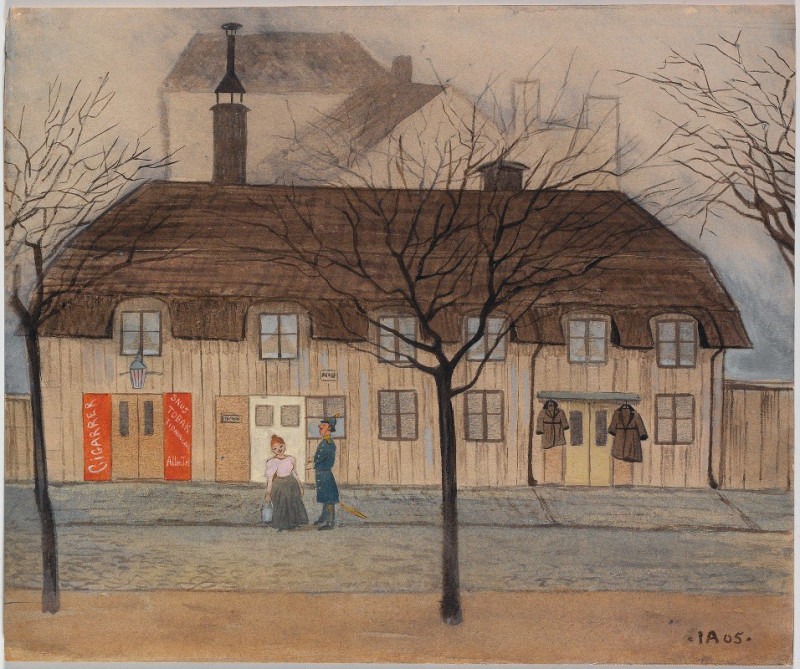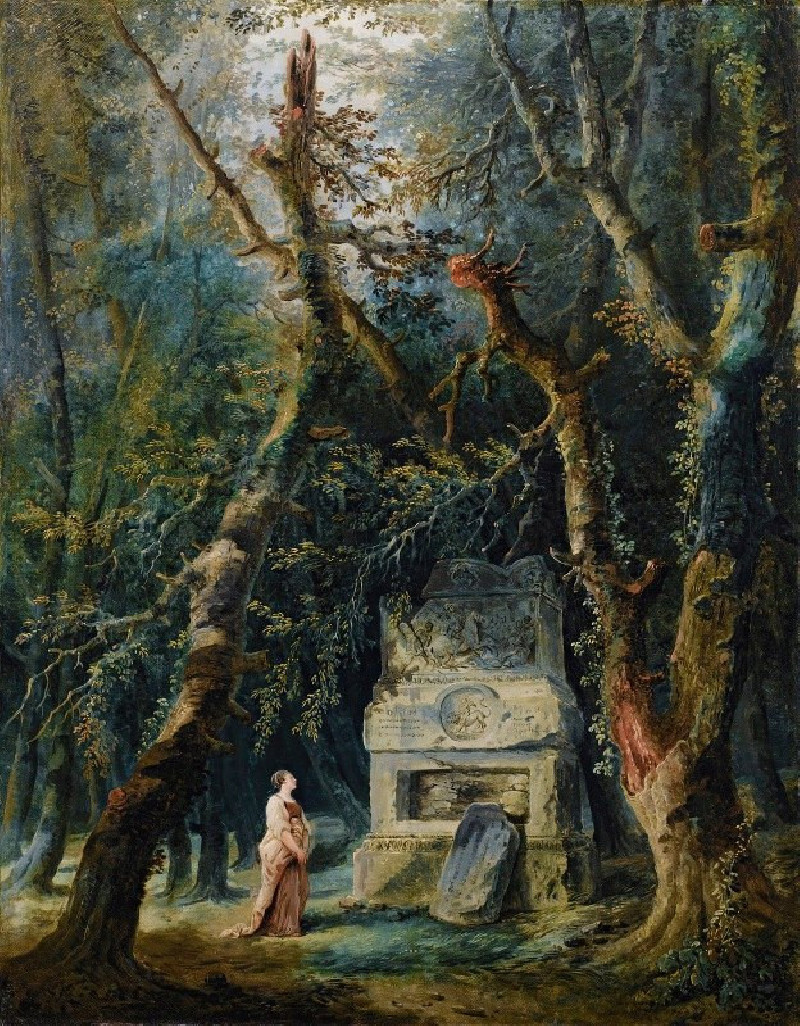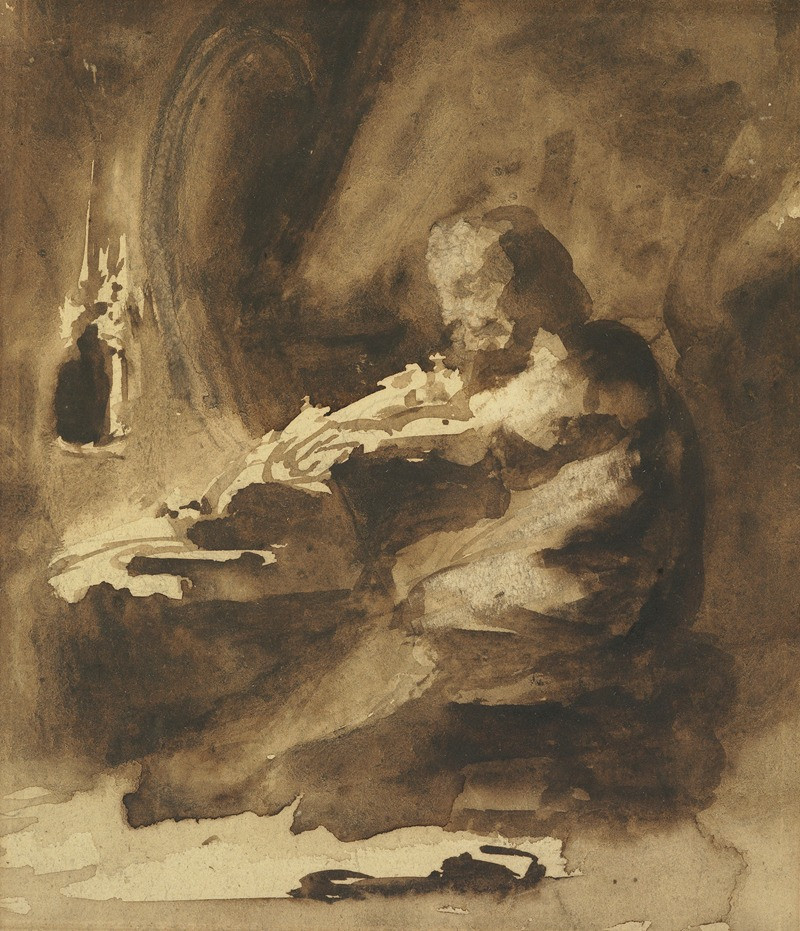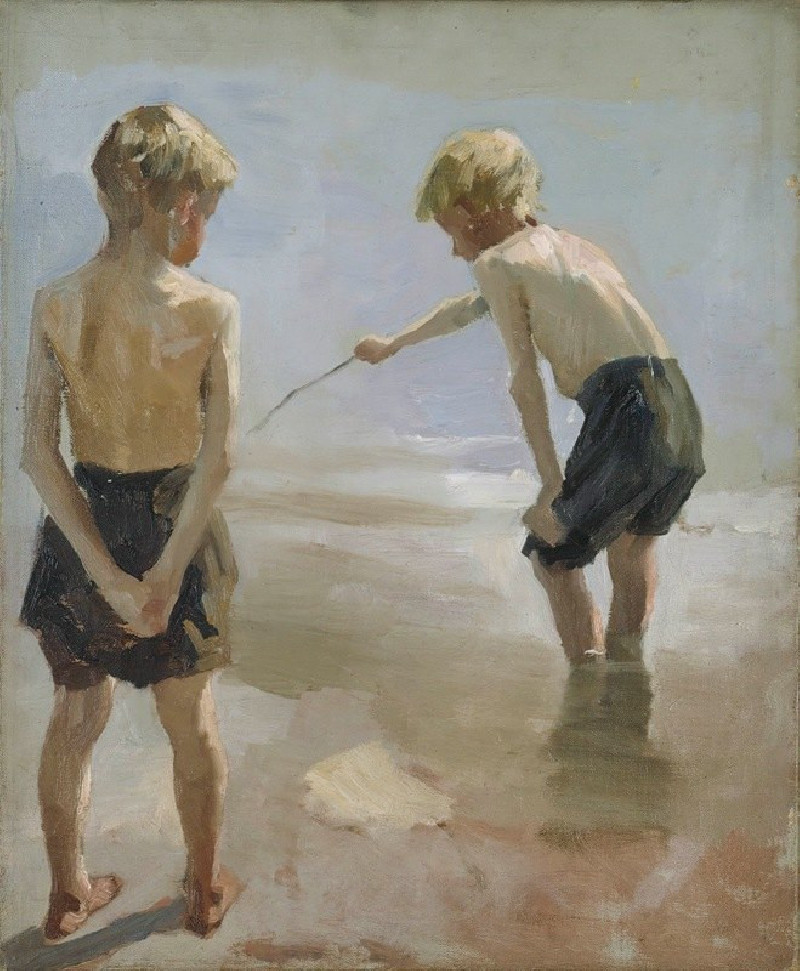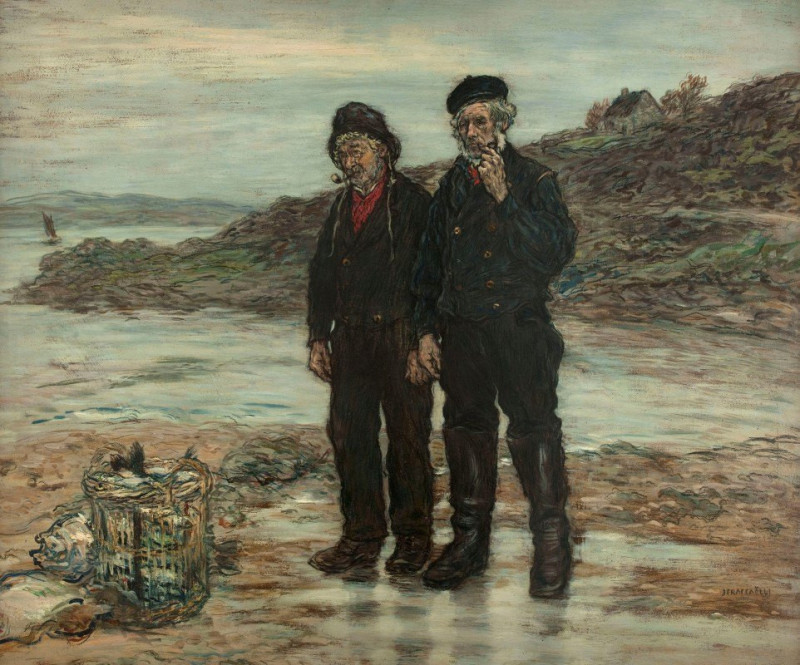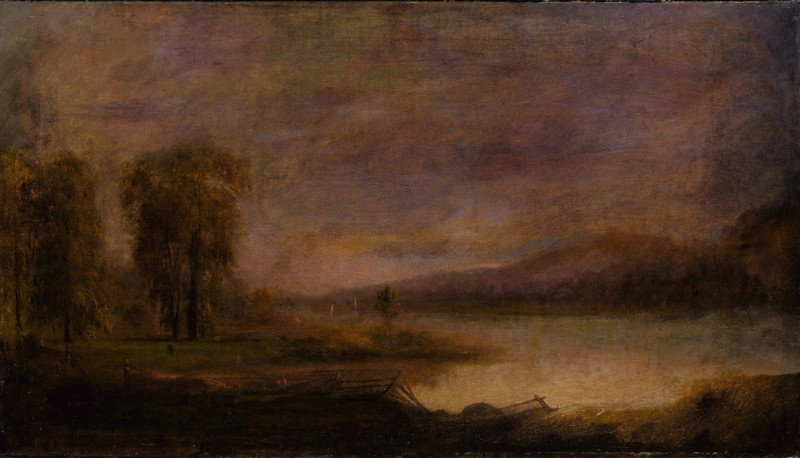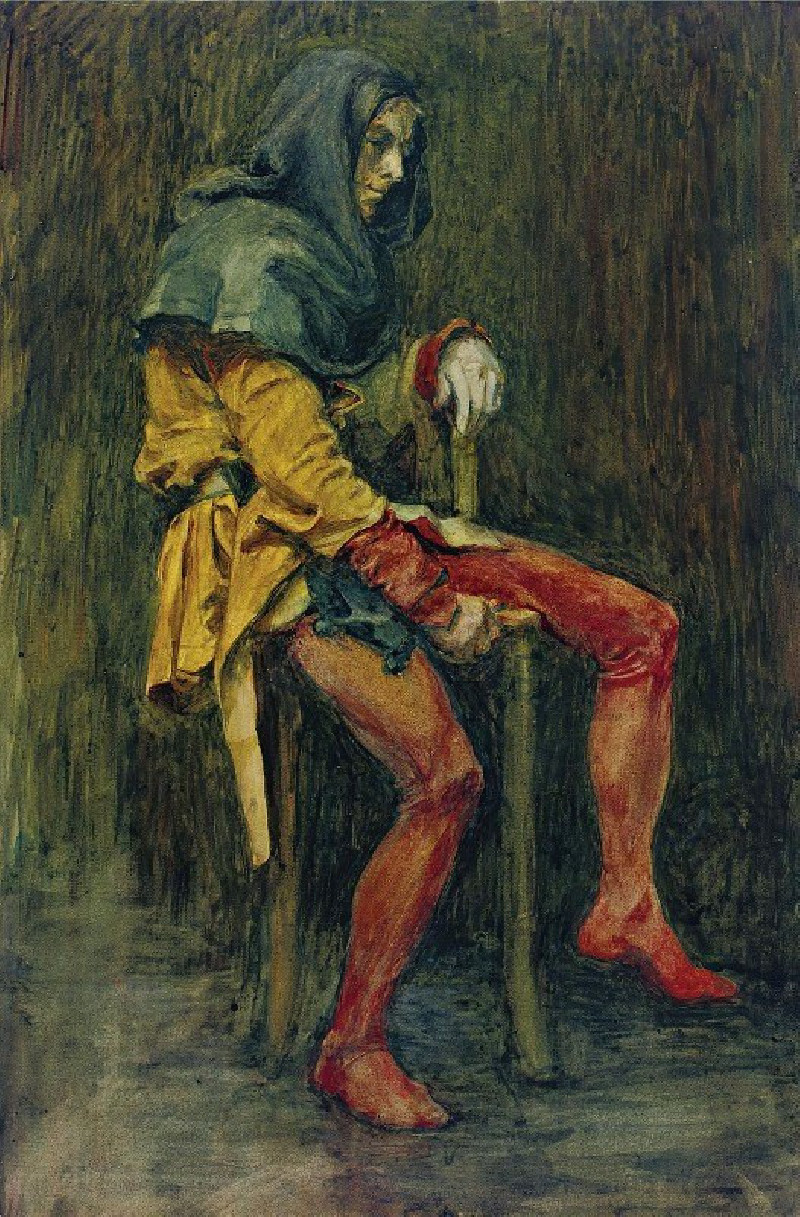Boats At Flushing
Technique: Giclée quality print
Recommended by our customers
More about this artwork
In Paul Signac's painting titled "Boats at Flushing," we can observe an impressionistic scene that captures the essence of a bustling harbor. This painting utilizes a technique related to pointillism, where tiny distinct dots of color are applied in patterns to form an image. Here, Signac plays beautifully with light and color, allowing a vivid portrayal of maritime activity.The foreground of the painting prominently displays several boats, characterized by their intricate rigging and pronounced masts that suggest a readiness for sailing. The boats are moored close to the viewer, depicted with dark hulls, adding a striking contrast to the lighter colors in the background. The gentle curves and details of the boats contrast beautifully with the linear, rigid appearance of the pier railing in the lower frame, which helps draw the viewer's eye towards the water and vessels.Looking into the middle and distant plane, the harbor is depicted under what appears to be a setting or rising sun, casting a warm glow that bathes the skyline in hues of yellow and orange.
Delivery
Returns
Paul Signac (1863-1935) was a French Neo-Impressionist painter. Together with Georges Seurat, Signac developed the Pointillism style. He was a passionate sailor, bringing back watercolor sketches of ports and nature from his travels, then turning them into large studio canvases with mosaic-like squares of color. He abandoned the short brushstrokes and intuitive dabs of color of the impressionists for a more exact scientific approach to applying dots with the intention to combine and blend not on the canvas, but in the viewer's eye.

